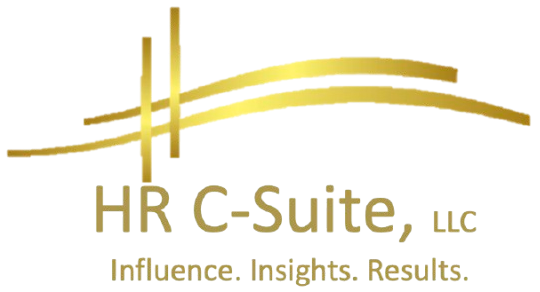Picture this: your organization is in the throes of a major transformation—new tech rollout, process overhauls, or a strategic pivot to stay competitive. The C-suite is energized, the roadmap looks airtight, and everyone’s nodding along in meetings. But a few months in, the cracks show. Your top performers are dragging, meetings turn into gripe sessions, and productivity dips as exhaustion sets in. Welcome to the transformation fatigue trap, where ambitious change initiatives burn out teams instead of igniting them. In a world where 70% of change efforts fail due to employee resistance and burnout, per a Harvard Business Review analysis, leaders face a stark reality: transformation isn’t just about strategy—it’s about sustaining human energy.
Burnout amid change is more common than ever, with 50% of workers reporting exhaustion during transitions, according to a 2023 Gallup study. For leaders and HR pros, ignoring this can derail even the best-laid plans, costing millions in lost productivity and talent. The good news? You can guide teams from fatigue to focus with empathy, smart pacing, and human-centered tactics. Let’s explore why transformation breeds burnout, the hidden costs, and why traditional approaches fall short. Then, it rolls out a practical, engaging playbook to lead teams through change without the crash, turning potential meltdowns into moments of momentum and renewal.
Why Transformation Fuels Fatigue
Transformation sounds glamorous—reimagining your business for the future—but it’s a grind for teams. Here’s why it exhausts even the strongest players:
- Constant Change Overload: Teams juggle new tools, processes, and expectations—60% report “change fatigue,” per Deloitte, as the brain craves stability.
- Emotional Toll: Uncertainty breeds anxiety—50% of employees feel stressed during shifts, per Gallup, draining mental energy.
- Skill Gaps: Rapid tech adoption leaves workers scrambling—40% lack training for new systems, per SHRM, amplifying frustration.
- Loss of Control: Micromanagement or unclear roles makes people feel powerless—55% disengage when autonomy erodes, per HBR.
- Celebration Drought: Wins get buried under next steps—70% of teams overlook milestones, per McKinsey, cutting motivation.
It’s like running a marathon with no water stops—excitement fades, and the finish line feels impossible. Leaders who notice the fatigue early can pivot to focus, keeping teams energized and effective.
The Hidden Costs of Burnout Amid Change
Transformation burnout isn’t just a bad vibe; it’s a financial black hole:
- Productivity Plunge: Exhausted teams cut output 20%, per McKinsey, costing $450 billion globally in lost work.
- Turnover Spike: Burned-out employees quit—40% of exits tie to change fatigue, per LinkedIn, costing 50-200% of salaries—$15,000 per $50,000 role, per SHRM.
- Morale Crash: Disengagement spreads—60% of teams feel lower trust, per Gallup, fracturing collaboration.
- Innovation Stall: Stressed workers don’t create—25% fewer ideas, per BCG, slowing adaptation.
- Reputation Hit: High turnover signals a toxic culture—50% of candidates avoid firms with burnout issues, per Glassdoor.
The flip side? Focused teams amid change boost productivity 20%, retention 18%, and innovation 22%, per Deloitte. It’s time to turn the tide.
Why Traditional Change Management Fails
Old-school transformation tactics—rigid roadmaps, top-down decrees, or one-off training—exacerbate burnout. They ignore human needs, with 65% of employees feeling unheard, per SHRM. Marathon meetings and forced upskilling overload without breaks, and lack of feedback loops leaves teams in the dark. A 2023 HBR study found 55% of change efforts fail due to poor emotional support. Leaders need a human-centered playbook that paces change, builds resilience, and celebrates progress to keep teams from crashing.
A Playbook for Leading from Fatigue to Focus
Here’s a practical, engaging 10-step playbook for leaders and HR to guide teams through transformation without burnout, weaving in empathy, pacing, and celebration to sustain energy and drive success year-round:
- Launch with a Human-First Vision
Kick off transformation with a “Why Us, Why Now” story—tie the change to shared purpose: “This upgrade will free you for creative work.” A 2023 SHRM case saw vision-setting boost buy-in 25%. Share via town halls or Slack, reinforcing quarterly to keep the human element front and center. - Pace the Change with Milestones
Break the roadmap into bite-sized phases—e.g., “Week 1: Tool intro; Week 4: First test.” A 2024 BCG case saw phased rollouts cut fatigue 20%. Use Trello for milestones, check progress biweekly, and adjust pacing to avoid overload. - Embed Micro-Breaks and Reflection
Schedule 10-minute “reset” pauses amid training—mindful breathing or quick walks. A 2023 Gallup case saw breaks lift focus 18%. Integrate via calendar invites, promoting via Slack, and review monthly to ensure teams recharge without guilt. - Gamify the Transformation Journey
Make change fun with a “Change Champions” challenge—points for completing modules or sharing tips. Offer prizes: “Pivot Pro” badges, coffee vouchers. A 2024 SHRM case saw gamification boost engagement 25%. Run via Bonusly, celebrating monthly to keep momentum light. - Foster Peer Support Networks
Pair teams for buddy systems—e.g., a newbie mentors a veteran on new processes. A 2023 Deloitte case saw peer support cut isolation 20%. Launch via Zoom intros, sustain with weekly chats, and check engagement quarterly to build resilience. - Personalize Learning and Support
Tailor training to roles—coders get hands-on AI, marketers learn analytics. A 2024 HBR case saw personalization boost skill retention 15%. Use LinkedIn Learning for modules, map via Workday, and update quarterly to match individual needs. - Communicate with Radical Transparency
Share the full picture: “This change cuts costs 15%, but here’s how it impacts you.” A 2023 Gallup case saw transparency lift trust 20%. Post weekly updates via email or Slack, addressing fears openly to keep teams informed and calm. - Celebrate Micro-Milestones
Spotlight early wins: “Team A nailed the first phase—lunch on us!” A 2024 SHRM case saw recognition cut fatigue 18%. Use Slack shoutouts or virtual toasts, tying to values, and sustain monthly to fuel motivation. - Monitor Burnout Signals
Use pulse surveys—“How’s the change feeling?”—to catch fatigue early. A 2024 BCG case saw monitoring improve well-being 15%. Integrate via Culture Amp, analyze biweekly, and adjust pacing to prevent overload. - Sustain with Hybrid Rituals
Build post-transformation habits—weekly hybrid coffee chats or innovation jams. A 2023 McKinsey case saw rituals boost cohesion 20%. Launch amid change, sustain year-round to keep focus sharp and burnout at bay.
Overcoming Challenges
Hurdles are inevitable:
- Resistant Teams? Start with small pilots, as BCG’s case cut pushback 20%.
- Budget Tight? Use free tools—Google Meet, LinkedIn Learning’s free tier—as SHRM’s case saved 15%.
- Skeptical Leaders? Show ROI—20% productivity gains, per McKinsey.
- Slow Progress? Focus on milestones, as HBR’s case accelerated change 25%.
Year-round tweaks keep the momentum alive.
Wrapping It Up
Transformation fatigue is real, but leaders can steer teams from exhaustion to focus with empathy, pacing, and celebration. By embedding small breaks, gamifying change, and fostering support, you can turn disruption into a springboard for growth. The next decade demands resilient, human-centered leadership—let’s embrace it, keep your team energized, and turn transformation into a triumph.

